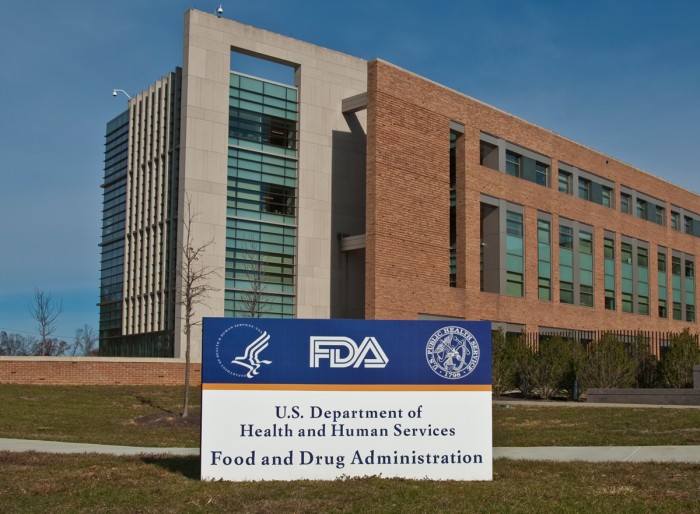What If the Free Market Decided Whether or Not Drugs Work?

During a meeting with leaders of the pharmaceutical industry on Tuesday, President Donald Trump said he wanted the U.S. Food and Drug Administration to speed drug approvals.
“We’re going to get the approval process much faster,” Trump said, adding that he has an unnamed “fantastic person” in mind to lead the agency.
Just how Trump will do that isn’t clear. But some of those with the president’s ear have embraced a radical free-market view. They want the marketplace, not the FDA, to determine how good drugs are.
For instance, one name floated in December as a potential FDA pick was that of Jim O’Neill, managing director of Peter Thiel’s investment firm Mithril Capital. O’Neill is a libertarian who has said he thinks drug makers shouldn’t have to prove their pills actually work at all, but only that they are safe. “Then let people start using them at their own risk,” he argued in a 2014 speech.
The idea is that the market itself will find ways to judge the best drugs, just as it rates restaurants, books, or software programs. It’s been a popular argument for years in some quarters, notably on the Wall Street Journal’s editorial page, but Forbes pointed out why the argument makes little sense. The reason is that many drugs aren’t safe at all. Instead they’re given when the benefits outweigh the risks.
Still, it’s tempting to think a Consumer Reports-type rating (or a “Yelp for drugs,” as another rumored candidate for the FDA job put it) could be a 21st-century solution to the low rate of new drug approvals. Others think the FDA should instead change its standards for approving new drugs. Joseph Gulfo, executive director of the Lewis Center for Healthcare Innovation and Technology at Fairleigh Dickinson University, has said he thinks the FDA should approve some medicines based on whether they produce positive trends in biological markers associated with disease, even if they haven’t shown that they change patients’ long-term health. Gulfo is said to be in the running for the FDA job, too.
We asked some experts what “safety only” drug approvals would mean for various stakeholders.
Patients: Gulfo reasons the FDA should approve more drugs on the basis of what they do to your cholesterol, tumor size, or glucose levels. But you might be buying drugs that, while great for your biomarkers, have no benefit to your overall health. The hidden cost? “You might forgo other treatment that could be beneficial to you,” says Dean Baker, co-director of the Center for Economic and Policy Research in Washington, D.C.
Drug companies: Critics of the FDA say the agency has made it too difficult to get drugs on the market—and with just 22 approved in 2016, they might have a point. But Ken Kaitin, director of the Tufts Center for the Study of Drug Development, says companies could stand to lose from looser requirements. Companies that have invested heavily in effective drugs would be “competing against drugs that do not work” but that “might have a slicker ad campaign,” Kaitin says.
Academia: Drug companies fund hospitals and universities to carry out clinical trials—in fact, the industry’s own accountants say it spends more than $10 billion a year to pay for about 6,000 trials, two-thirds of which were so-called phase II/III studies, the kind that measure efficacy. If drug companies stopped paying for that research, it’s unclear who, if anyone, would pick up the bill.
In a 2016 policy paper, Gulfo said insurance companies and large payers like Medicare could still demand studies, or even pay for them. “It need not be an FDA function to oversee such trials,” he wrote.
Taxpayers: Directly or indirectly, we all pay a bundle for drugs. The U.S. health-care system spent $324.6 billion on drugs in 2015. Meanwhile, pharma companies keep hiking drug prices. Could a free-market approach lead to lower costs? Baker is skeptical. “Drug companies charge what they can get away with,” he says. “Making it easier to get a drug through the FDA won’t change that one iota.”
Keep Reading
Most Popular
Large language models can do jaw-dropping things. But nobody knows exactly why.
And that's a problem. Figuring it out is one of the biggest scientific puzzles of our time and a crucial step towards controlling more powerful future models.
The problem with plug-in hybrids? Their drivers.
Plug-in hybrids are often sold as a transition to EVs, but new data from Europe shows we’re still underestimating the emissions they produce.
Google DeepMind’s new generative model makes Super Mario–like games from scratch
Genie learns how to control games by watching hours and hours of video. It could help train next-gen robots too.
How scientists traced a mysterious covid case back to six toilets
When wastewater surveillance turns into a hunt for a single infected individual, the ethics get tricky.
Stay connected
Get the latest updates from
MIT Technology Review
Discover special offers, top stories, upcoming events, and more.